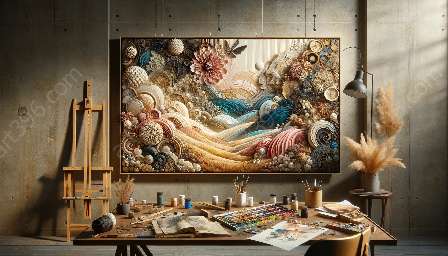Digital mixed media art is a form of artistic expression that blends traditional and digital creative techniques to produce unique and innovative works of art.
Its rise has led to significant social and cultural impacts, influencing the way people create, consume, and interact with art. By exploring the intersection of technology, creativity, and culture, we can gain deeper insights into the transformative effects of digital mixed media art.
Artistic Innovation and Accessibility
Digital mixed media art has expanded the possibilities for artistic innovation by providing new tools and platforms for expression. Artists can seamlessly integrate various mediums, such as photography, painting, and digital design, into their work, offering a multi-dimensional and dynamic viewing experience.
Moreover, the accessibility of digital tools and online platforms has democratized the art-making process, allowing a wider range of creators to share their work with global audiences. This inclusivity has diversified the art world, fostering new voices and perspectives that reflect the richness of contemporary society.
Global Connectivity and Collaboration
The digital nature of mixed media art transcends geographical boundaries, enabling artists to collaborate and communicate across cultures and continents. This global connectivity fosters a sense of community and exchange, where diverse artistic visions converge and inspire one another.
Through digital platforms and social media, artists can showcase their work, engage with a worldwide audience, and form meaningful connections with fellow creators. This interconnectedness has facilitated cultural exchange and understanding, enriching the artistic landscape with diverse narratives and aesthetics.
Challenges and Opportunities
While digital mixed media art presents new opportunities for creative expression, it also poses challenges related to authenticity and artistic integrity. The ease of digital manipulation and reproduction raises questions about the originality and ownership of art, prompting discussions about copyright, attribution, and the value of physical versus digital art.
Furthermore, the rapid evolution of technology introduces complexities concerning digital preservation and conservation, as artworks created using digital media require specialized methods for long-term maintenance and display.
Cultural Reflection and Critique
Digital mixed media art reflects and critiques contemporary culture, addressing social, political, and environmental issues through visually compelling narratives. Artists harness digital technology to engage with current affairs and societal concerns, leveraging the digital medium to convey powerful messages and provoke critical discourse.
By amplifying marginalized voices and shedding light on pressing issues, digital mixed media art serves as a catalyst for social awareness and cultural transformation. It encourages viewers to reflect on their beliefs, values, and relationships with the world around them, fostering empathy and understanding.
Conclusion
In conclusion, digital mixed media art has profoundly impacted society and culture, redefining artistic practices, fostering global connectivity and collaboration, presenting new challenges and opportunities, and reflecting and critiquing contemporary culture. As technology continues to advance, the social and cultural impacts of digital mixed media art will continue to evolve, shaping the artistic landscape and enriching our collective experience.

